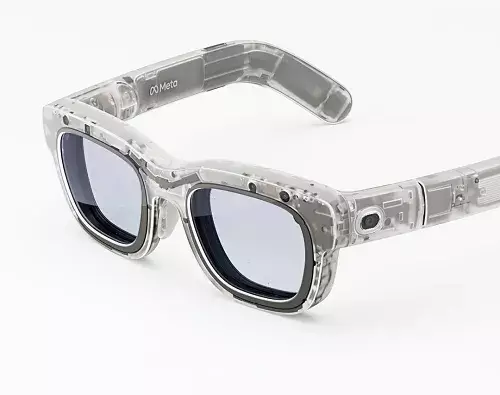The ambitious vision of augmented reality (AR) is rapidly evolving, and at the forefront of this progress is Meta with its Orion AR glasses. Despite the product being years away from its consumer launch, scheduled for 2027, Meta has offered tantalizing glimpses into the technological underpinnings of its forthcoming device. The significance of this development cannot be understated; it represents a pivotal moment in the trajectory of personal computing, positioning AR glasses as the next frontier of digital interaction. The comprehensive insights shared on social media platforms highlight both the potential and the ongoing challenges in bringing these futuristic spectacles from concept to reality.
Addressing Design and Functionality
One of the critical hurdles that Meta is grappling with is the balance between sophisticated functionality and user-friendly design. The current iteration of the Orion glasses may appear bulky, prompting Meta’s Reality Labs team to seek innovative solutions to streamline their form factor. The introduction of a “puck” accessory, which will provide supplementary computing power and battery life, represents a novel approach to reducing the weight on the wearer’s face. However, despite such advancements, the chunky aesthetic remains a sticking point. It is crucial for Meta to create a device that not only performs well but also blends seamlessly into daily life, akin to the successful integration seen with Ray-Ban smart glasses.
AI Integration: A Game Changer
As Meta marches forward, the incorporation of artificial intelligence into the AR glasses emerges as a transformative element. This synergy promises to enhance user experience by tailoring functionality to individual needs and preferences. The goal is to replicate the success of the Ray-Ban smart glasses by making the AR experience not only practical but also desirable. By merging cutting-edge technology with a fashionable design, Meta hopes to cultivate a broader consumer base that finds genuine utility in AR.
Meta has long acknowledged the prohibitive nature of current AR technologies, especially in the face of competition from tech giants like Apple. CEO Mark Zuckerberg has been openly critical of Apple’s VisionPro device and its steep price point of $3,499, arguing that such exclusivity stifles wider adoption. This confrontation ignites a vital conversation about accessibility in technology; Meta’s ambition is for its AR glasses to be available at a price resembling that of modern smartphones, making them approachable for everyday consumers.
Navigating Complexities: Costs and Market Strategy
However, transitioning from aspiration to reality entails navigating a labyrinth of complexities. The ongoing U.S. trade tensions and their impact on sourcing components internationally pose significant obstacles for Meta. Achieving a competitive price point without compromising on quality or feature-richness will require strategic planning and innovative manufacturing solutions. Meta’s stance to have their AR glasses permeate as many homes as possible rests on a delicate balance—finding ways to not only recover production costs but also profit from future expansions of service and advertising.
Yet there is more at play here than just pricing strategies. The roadmap towards market penetration includes a requisite emphasis on durability, style, and versatility. The pressing question remains whether Meta can cultivate a device that resonates not just with technology enthusiasts but also with the broader public seeking functional yet appealing new gadgets.
Envisioning the Future: Beyond Mobile Phones
Zuckerberg’s assertion that AR glasses might eventually overshadow smartphones as the primary interface for connectivity highlights a fascinating prospect for the future. This paradigm shift requires a profound transformation in how we perceive and interact with devices. Should Meta navigate the forthcoming challenges astutely and effectively, Orion AR glasses could serve as a pivotal tool in the seamless integration of digital and physical realities.
Evaluating the current technological landscape provides essential context. The success of such innovations hinges not only on technological prowess but also on the cultural readiness to embrace AR as an integral part of daily life. As Meta works diligently on refining its vision, the interplay between consumer trends, technological advancement, and design will dictate the ultimate success of the Orion glasses.
While it’s an unpredictable road ahead, the stakes are higher than ever for Meta as it sets its sights on redefining the future of interaction. The quest towards bringing the Orion AR glasses to life encapsulates a larger narrative: one of ambition, innovation, and the relentless pursuit of a world where digital experiences enhance our reality.


Leave a Reply